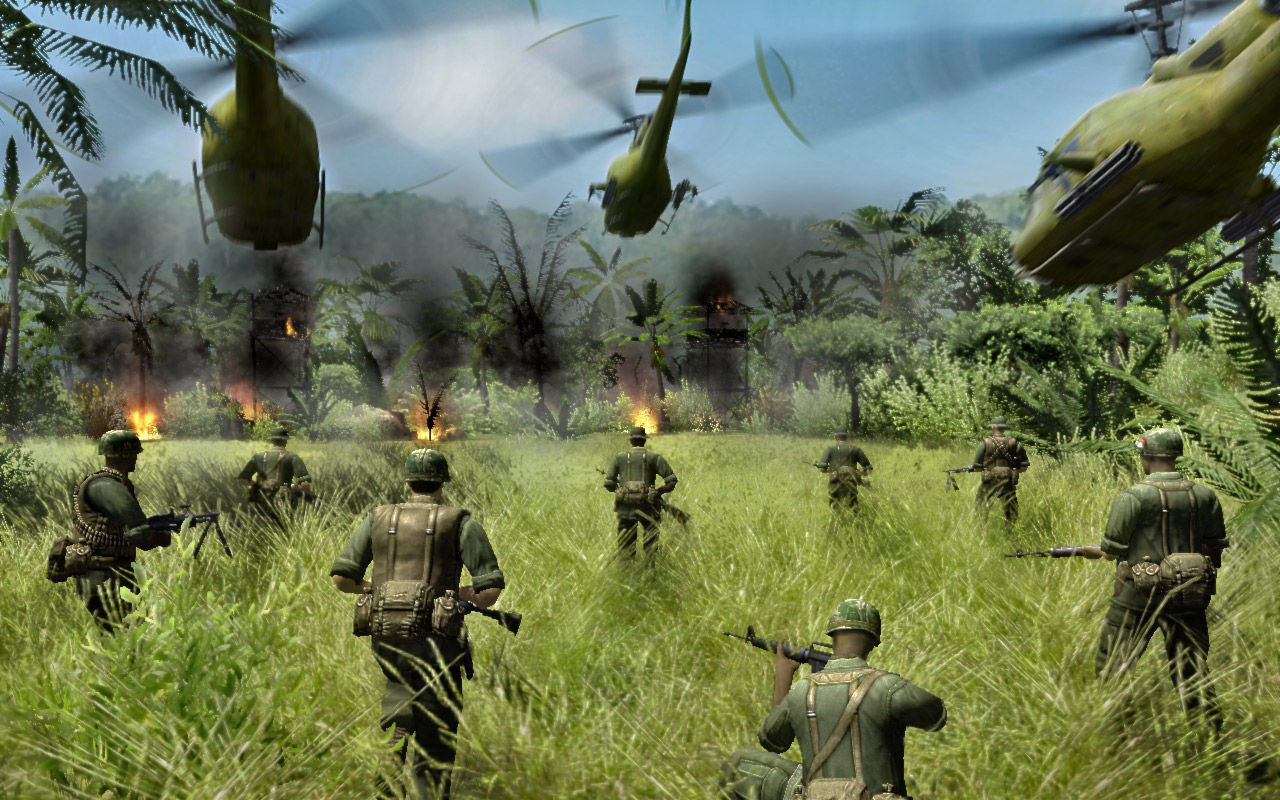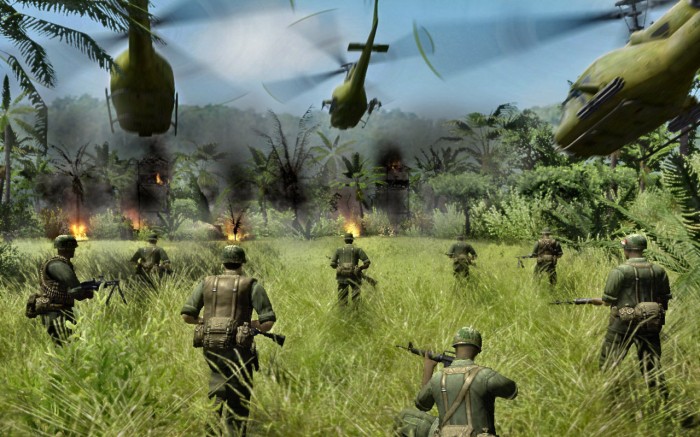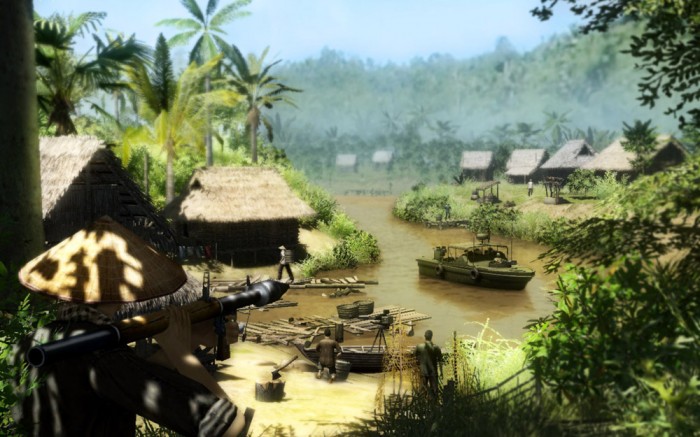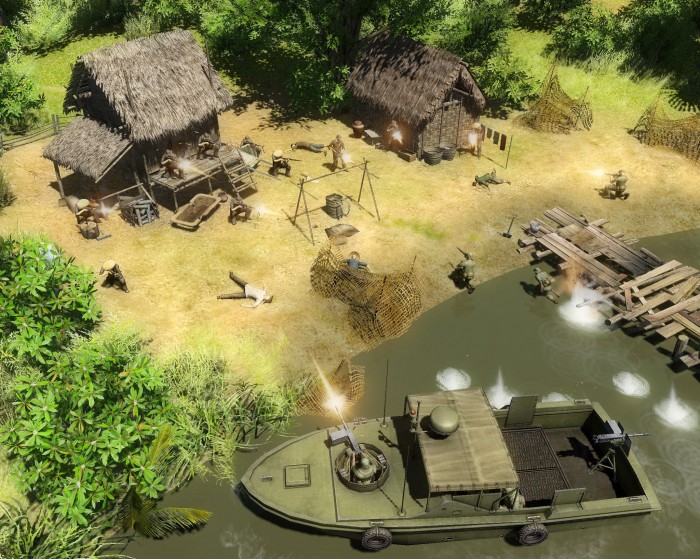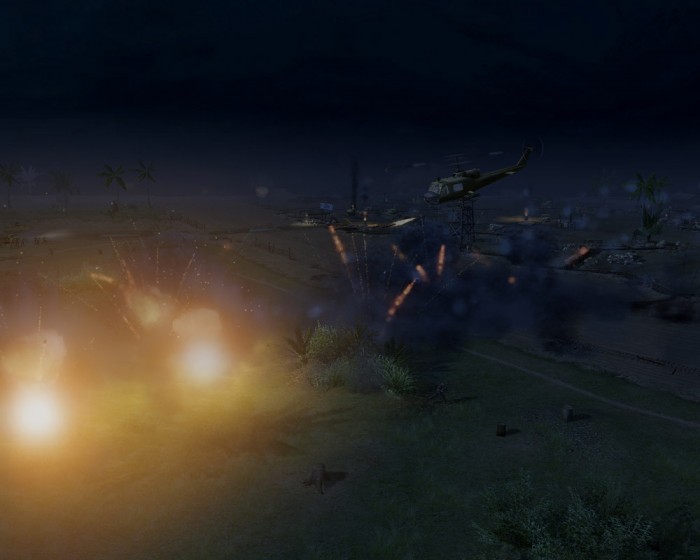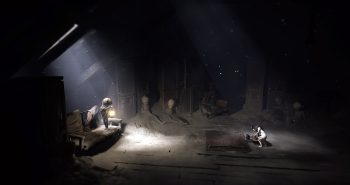I’ll be the first to admit it, with my love of strategy games I am kind of surprised I missed the original Men Of War. The game had everything that fit me, hard as a Drill Sargent but addictive fun gameplay. So when I got the chance to give Men Of War: Vietnam a play I was excited not only to try out the franchise but also see if the sequel lived up to the franchise name.
Set in Vietnam MOW:V takes a slightly different approach than most war games by first having the gamer play from the point of view of who is traditionally from our standpoint considered the enemy. The first campaign that unlocks is from the point of view of Russian special forces training North Vietnamese on how to fight the South Vietnamese and their allies, the Americans. Now this isn’t the first game where you play “the enemy” but the game tries to be very historically accurate and so shows us losing a war. Onlookers watching me play the game found it a bit disturbing to watch me overrun heavily fortified American bases during the Tet Offensive, one of the most famous North Vietnamese attacks and pushes of the war. Having studied the Vietnam War extensively it was very interesting to be playing from a point of view I had very little knowledge of, especially the Russian involvement and time spent in Cambodia. Any historic war gamer out there who really tries to have a better understanding of this war should play this game to get a fresh perspective. I will get into the gameplay I promise, but the perspective in the game is a key draw, and I think worth playing the game for alone.
The story is mostly told in diary entries between the missions or in briefings with voice-overs. The voice acting is excellent, which I guess is a bit of an improvement over the first which was known for the opposite, particularly the voice acting of the Russians which followed their speech pattern when speaking English very well. When you are successful in a mission you get a historically accurate summary of that period of the war and how that particular mission would play into it. The story is written really well to allow gameplay to be fluid and each decision made to be your own but for the final outcome to follow historical events. Gamers who don’t care about history can skip over these cut scenes and still be able to play the strategic aspects of the game without problem, but I have to say that is missing out on a very big part of the game.
Graphically Men Of War: Vietnam does something I very seldom see in games, the cutscenes aren’t as crisp and detailed as the play sections. The detail given to every tree, bush, uniform, expression on character’s faces are very deep and sometimes makes you feel like you are playing an animated movie rather than a game. You can have a top look down on the action or you can swing your camera down behind a troop or follow bullet path toward a target all very smoothly making it so that once you put events into motion you could watch them like a movie where you pick the views and angles you want to see it from. The camera movement is one of my only with the game as well, because though you can do nice sweeping movements around the field sometimes just looking more up or down can be difficult and you find yourself backing out to get a view of something that is right above your screen’s eye view.
Controlling the troops is very standard strategic movement style where you move your mouse over an area and move all of them or select one particular unit and move just that one. You can decide how they move and what position they hold by clicking on standing, kneeling or prone which each have their own advantage in both movement and combat. One interesting thing about movement is when you pick a location to move to the game will give you suggestions on deployment, so if you move behind a rock it might suggest a couple standing while others kneel and maybe some go prone and with a click of the mouse when they arrive at that position they will take up those stances. This can be very, very handy when you are deploying into a hot zone with limited cover and the need to immediately go on the offensive. You also have the ability to search corpses, crates and around on the ground for supplies and weapons upgrades with each unit having specific talents and so you pass weapons around until you find the unit that can use it best. You may have two machine gun experts and one is better with the a grease gun while another is better with the M60. The game takes great pains to make sure that the weapons are accurately represented both by how they look and by their specs such as clip load. That is just a word that comes up more and more when discussing this game: accurate. They want the game to be strategically fun but as historically accurate right down to a grenade’s damage radius as possible. Controlling the troops is the only other area of concern I had with the game, sometimes when you would pick a unit and order it to fire a grenade launcher for example, it might change weapons on you and start unloading with a machine gun. Or you may order a unit to toss a grenade in a bunker and instead the unit will run into the bunker and stand right where you wanted the grenade, which usually happens to be right in the middle of a bunch of enemy units, not the best place to hang out. I imagine a patch could fix this (or it might get fixed by release date even) so it doesn’t necessarily prove to be a huge problem, in some ways it can kind of be comical as long as you saved as you went.
This brings up a really important aspect, save often. I may have saved too often, but I got in the habit of saving after every kill or before any major planned engagement. The reason is this game is tough, probably as tough as the original and though there are only technically 5 missions per campaign additional objectives are added constantly and there are very, very few spots where you get reinforcements. So if you go into a mission and lose one of your four guys while fighting off 18 enemies, you are only going to have three guys the whole rest of the mission and the number of enemies are only going to increase as well as the challenges on approaching them. Considering each of your units has it’s own specialty both with weapon and use in deployment you might find that dead fella is exactly what you need on the 10th objective of the mission. The game is hard and challenging but not impossible which makes it very addictive play. You try an approach to a situation, it fails, you think of another, load the last save point and give it a run. You have to have the strategist’s endurance to play this game, a single mission may take hours when all the objectives and side objectives and failures happen but if you have that puzzling kind of mind this game is excellent.
There are also vehicles that can be played, each one has it’s own benefits and shortcomings, but I will let you discover that for yourself since honestly discovery in this type of game is second only to strategy and all I have done in this article is tell you how things are not how to get them done.
Last Call:
This game is a top-notch, difficult as heck strategy game which combines beautiful graphics with historic gameplay and accuracy. It gives you a point of view on a war that we seldom get and provides challenges at every turn. If you like this kind of game and have the patience to try different strategies over and over until you make it work then this is a great game for you. Just. Save. Often! Time for me to go pick up the first game.

